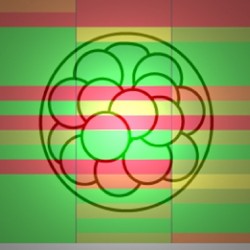By Helen Figueira
March 26, 2010
Time to read: 5 minutes
 Study unlocks new ways of investigating embryo development
Study unlocks new ways of investigating embryo development
Stem cell therapy holds the key to regenerative medicine: replace defunct or diseased cells in an organ by injecting new cells derived from a continually replenishing source. This kind of therapy often relies on the potential of embryonic stem cells to become any cell within the body, a property called pluripotency. This potential is crucial in development because all cells in an embryo originate from a single fertilised cell.
Joana Santos and Filipe Pereira of the CSC Lymphocyte Development group and coworkers have recently shown that other stem cells important in embryonic development – associated with the generation of extraembryonic tissues such as the placenta and yolk sac – also have the potential to reprogram mature cells. However, the reprogrammed cells they produce differ from those programmed by normal ES cells, reflecting the different provenance of the cells used.
The researchers were investigating the development of mouse embryos to see how chromatin – the package of DNA and protein in a cell’s nucleus – changes shape during development as the different cells specialise for specific tasks. They compared the expression of genes in trophectoderm stem (TS) and extraembryonic endoderm (XEN) cells (see box below), which are generated as the embryo becomes larger and implants in the womb. continued…
Study unlocks new ways of investigating embryo development
Stem cell therapy holds the key to regenerative medicine: replace defunct or diseased cells in an organ by injecting new cells derived from a continually replenishing source. This kind of therapy often relies on the potential of embryonic stem cells to become any cell within the body, a property called pluripotency. This potential is crucial in development because all cells in an embryo originate from a single fertilised cell.
Joana Santos and Filipe Pereira of the CSC Lymphocyte Development group and coworkers have recently shown that other stem cells important in embryonic development – associated with the generation of extraembryonic tissues such as the placenta and yolk sac – also have the potential to reprogram mature cells. However, the reprogrammed cells they produce differ from those programmed by normal ES cells, reflecting the different provenance of the cells used.
The researchers were investigating the development of mouse embryos to see how chromatin – the package of DNA and protein in a cell’s nucleus – changes shape during development as the different cells specialise for specific tasks. They compared the expression of genes in trophectoderm stem (TS) and extraembryonic endoderm (XEN) cells (see box below), which are generated as the embryo becomes larger and implants in the womb. continued…
In order to test how gene expression differed between the three stem cell types, the team first looked at the levels of genes expressed in each kind. They were also interested in how the timing of gene replication differed between the three types, making use of the idea being that genes that replicate sooner are in ‘open’ areas of chromatin – allowing easy access to transcriptional machinery – whereas those that replicate later lie in tightly-bundled chromatin and are characteristic of repressed genes. They looked at specific developmentally important genes and measured how much newly-copied DNA encoding those genes was present at different stages during a cell’s divisional cycle.
The three types of stem cells each produced different patterns of gene expression and replication timing, reflecting their different origins. Among the three stem cell types, ES and TS cells exhibited closely matching replication timing profiles, indicative of highly accessible chromatin. In contrast, XEN cells had reduced chromatin accessibility, particularly around genes required for pluripotency. The similarity between ES and TS cells was expected: only very few genes are uniquely restricted to the placenta, with the majority of shared genes involved in the development of many internal organs.
Using each of the three stem cell types, the team successfully reprogrammed mature human lymphocytes (white blood cells) to resemble human ES and extraembryonic cells. This technique may be important for studying the early stages of human development, because it allows investigation without the requirement for human embryos.